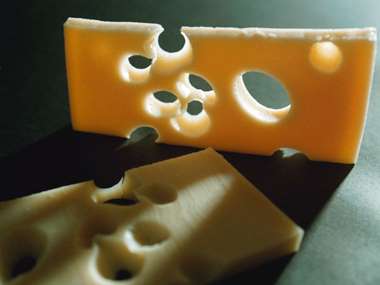May 28, 2015
Geneva: Eureka! After about a century of research, Swiss scientists have finally cracked the mystery of the holes in Swiss cheese.

Despite what you may have been told as a child, they are not caused by mice nibbling away inside cheese wheels.
May 28, 2015
Geneva: Eureka! After about a century of research, Swiss scientists have finally cracked the mystery of the holes in Swiss cheese.

Despite what you may have been told as a child, they are not caused by mice nibbling away inside cheese wheels.
Experts from Agroscope, a state centre for agricultural research, said the phenomenon — which marks famous Swiss cheeses such as Emmental and Appenzell — was caused by tiny bits of hay present in the milk and not bacteria as previously thought.
They found that the mystery holes in such cheeses became smaller or disappeared when milk used for cheese-making was extracted using modern methods.
"It's the disappearance of the traditional bucket" used during milking that caused the difference, said Agroscope spokesman Regis Nyffeler, adding that bits of hay fell into it and then eventually caused the holes.
Agroscope said the subject had been under study since at least 1917 when American William Clark published a detailed study and came to the conclusion that it was caused by carbon dioxide released by bacteria present in the milk.
Agroscope scientists noted that Swiss cheeses had fewer holes over the past 10 to 15 years as open buckets were replaced by sealed milking machines which "completely did away with the presence of tiny hay particles in the milk".
Courtesy: AFP
















































































































